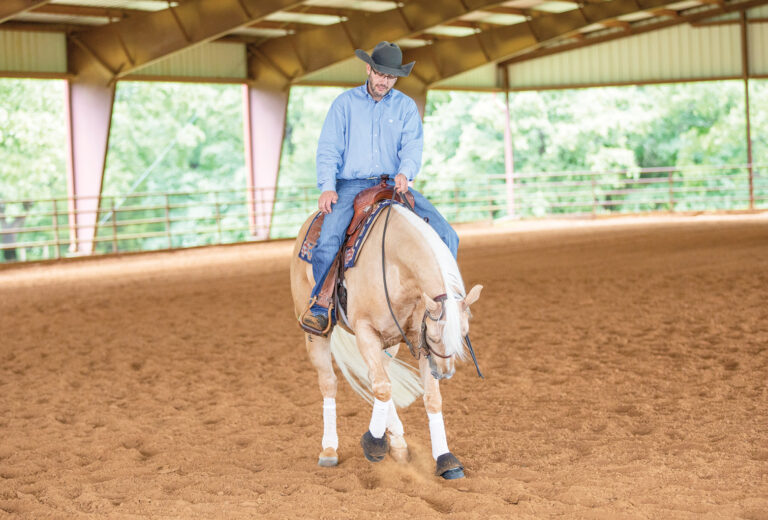Having a horse that backs freely is a must-have for competition, where you’re judged on how responsive your horse is to your cue. But it’s also important for riders who spend their time on the ranch or trails, because a horse that willingly responds to your cues is going to maneuver more easily than one that locks his feet in the ground and pushes against the bit.
[MORE WITH BUD: DEVELOP AT HIS OWN PACE]
If your horse is dull to your cue and refusing to back, I’ll show you a few things you can do in your arena to eliminate a sticky backup and get some life into your horse’s feet.
On the Ground
.png)
Instead of getting into a tug-of-war battle when you’re in the saddle, take your training to the ground to help your horse be more responsive to your hand cues when you’re asking him to back. Start by placing your horse against your arena’s fence; this will work as a natural barrier to keep him straight and avoid any wiggling around.
Stand next to your horse, facing him, on the opposite side of the fence, and put your reins over your horse’s neck. (If you prefer to use a halter and lead rope, you can.) Take the rein that’s closest to you and start to put pressure on the rein asking him to back up. His chin should move inward to release to the pressure of your hand, and his feet should start to move. If this happens release your hand before asking for another step.
.png)
If you go to your hand and he pushes against the bit or his feet don’t move, continue asking him to back up and use your toe to tap your horse’s hoof wall. This shouldn’t be kick—a light tap with your foot is all you need to encourage him to pick up his foot and step back. You can even use your voice to cluck or kiss at your horse to encourage him to move.
If your horse swings his hip to the middle of the arena, don’t make a big deal out of it. Move his hip back over so he’s straight once again and go back to asking him to back. Continue using this pressure-and-release system for about 10 to 15 steps, then turn your horse around and try backing him in the opposite direction. It doesn’t have to be perfect, but he should be putting in some effort to move backward and away from the pressure of your rein.
When you can do that successfully, move yourself so you’re standing next to your horse’s shoulder, near your saddle, and facing the same direction as him. Take the reins with both hands and try to hold them close to where they would be when you’re in the saddle. From there ask him to back up. You should be able to use just your fingers to get a response. When you close your fingers, that pressure should tell him to give in his face and back. When you open your fingers up again, he can relax.
In the Saddle
After you spend some time on the ground, your horse should be more willing to move backward when you apply any pressure using your reins. Now it’s time to get in the saddle and see just how well your horse responds to your cues.
[MORE WITH BUD: START AND STOP A SPIN]
.png)
Continue using your arena fence to help you stay straight and hold your reins in two hands to begin. It’s the same pressure-and-release concept as before. Once your horse gives in his face and moves his feet, reward him by releasing your rein pressure. If he’s still getting stuck, go to your feet and bump his sides to create some movement.
As you progress, move to one hand, if you’re riding in a one-handed bit, and see how your horse responds when you open and close your fingers, and ask for the back. Be patient. Work to improve just a little each day. If you keep practicing, you’ll have your backup where you like it in no time.
[WATCH THIS EXERCISE: FIX A STICKY BACKUP]






